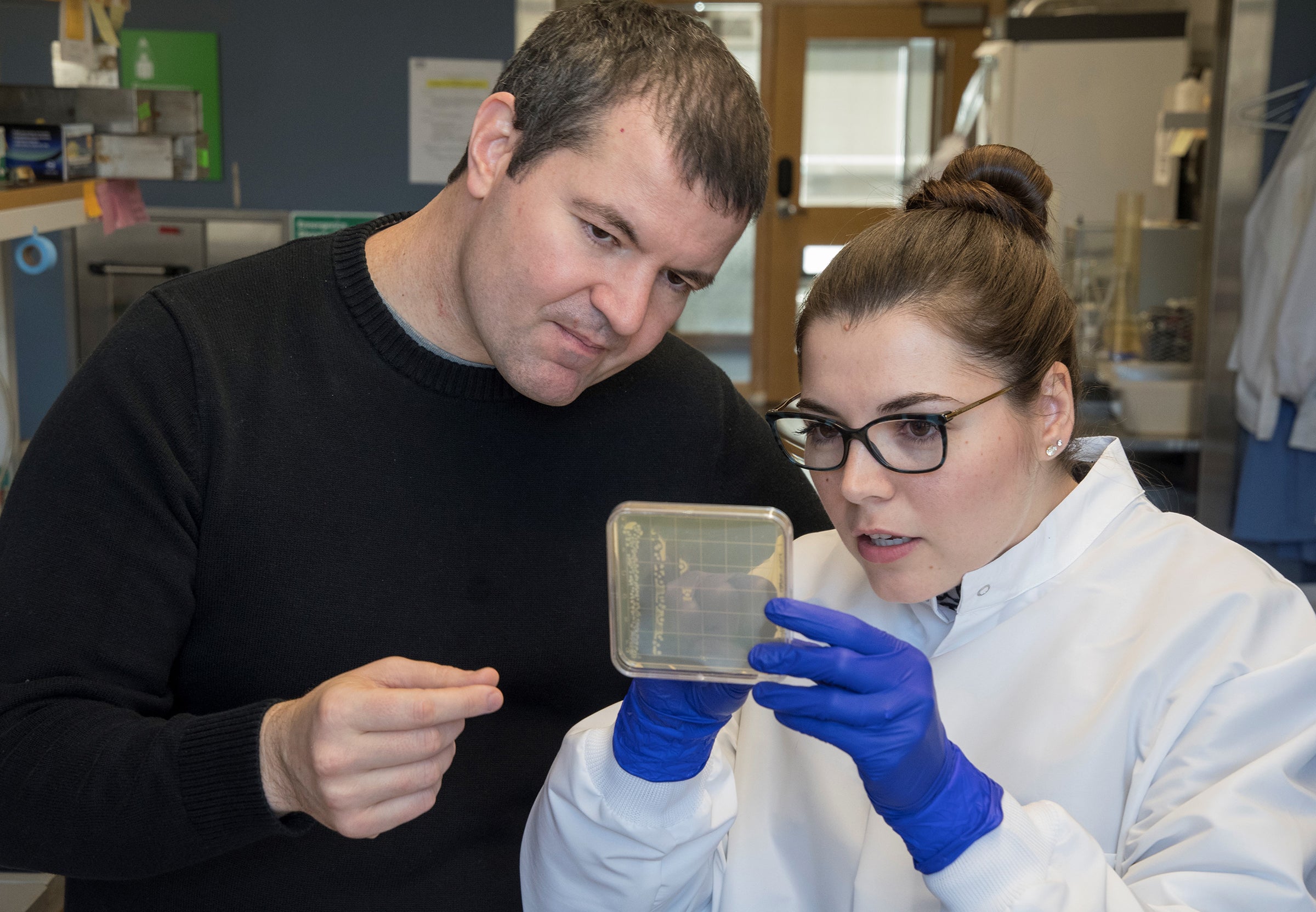KINGSTON, R.I. – December 2, 2019 – Matthew Ramsey studies bacteria in the human mouth, but he sounds like a wildlife biologist. He compares important bacteria to oak trees around which the forest is organized, and he discusses the places where oral bacteria live as if they were habitat in a rain forest.
His analogies help his students at the University of Rhode Island understand what he calls the Microbiome Revolution and all of the good and bad bacteria that live on and in the human body. And his underlying message is clear: Poor oral health is one of the best predictors of heart disease later in life.
“If you’re always having gingivitis, or if you’ve had more than one periodontal infection, then your risk for heart disease is really high,” said Ramsey, URI assistant professor of cell and molecular biology. “And you’re much more likely to develop periodontal infections or have heart disease if you have type 2 diabetes.”
As a graduate student, Ramsey became interested in how bacteria interact with each other, and he chose to focus on bacteria in the mouth because there are relatively fewer species of bacteria found there and a majority of them can be grown in a laboratory setting.
“It’s an accessible community,” he said. “I really want to understand who are the keystone organisms in the mouth, who anchors the microbial community in there.”
To investigate the relationship among oral bacteria, Ramsey has been awarded a five-year, $2.2 million grant by the National Institutes of Health. He is collaborating on the project with Jessica Mark Welch, associate scientist at the Marine Biological Laboratory in Woods Hole, Massachusetts, and Jiyeon Kim, URI assistant professor of chemistry. Three doctoral students and six undergraduates are also participating in the research.
According to Ramsey, many oral bacteria are dependent on multispecies interactions for their survival. So the research team is investigating the relationship among the 20 to 30 most encountered species of bacteria in a microbial community called the supragingival plaque, which is located on the tooth surface just above the gumline.
“In studying this plaque, we want to see who’s interacting with who,” he said. “If we see bacteria stuck to each other, the probability of some meaningful interaction taking place is incredibly high. So we’ll take those in the lab and grow them in isolation. If I think one is dependent upon another, I can show that it grows terribly or not at all by itself but when another species is present it grows great. But is it a one-way interaction or is it mutually beneficial?”
Ramsey is most interested in understanding the mechanisms responsible for the interactions and which mechanisms promote a healthy community of bacteria assembling in the mouth. He especially hopes to identify the mechanisms that lead to the expulsion of invading pathogens.
“This is important because when you don’t have your normal microbial community, you could end up with a complete ecological shift,” he said. “It’s like after a forest fire. Does it eventually go back to being a forest or does it shift to something else? In the case of the human body, if another microbial community takes over, it might not be the one you want.”
While Ramsey describes his research as “basic science,” he said it plays a role in a wide variety of human health applications.
“Because we’re all trying to avoid using antibiotics, there’s a big push on to find probiotics that you can feed yourself to keep your normal microbial population stable,” he said. “But first we need to know what is the nature of our healthy microbiome, and what interactions are keeping the community stable?
“People are already advocating for oral probiotics without fully understanding what the native community is doing,” Ramsey added. “What are native species doing to keep the bad ones suppressed? Are they actively suppressing them? And how is the community staying stable and in good abundance?”
At the end of the five-year grant, he expects to know how the bacteria in the supragingival plaque maintain a healthy community. And then he plans to investigate the bacterial relationships elsewhere in the mouth.

